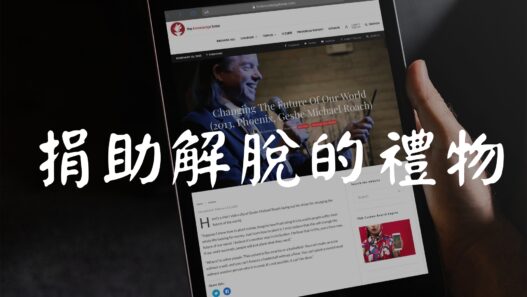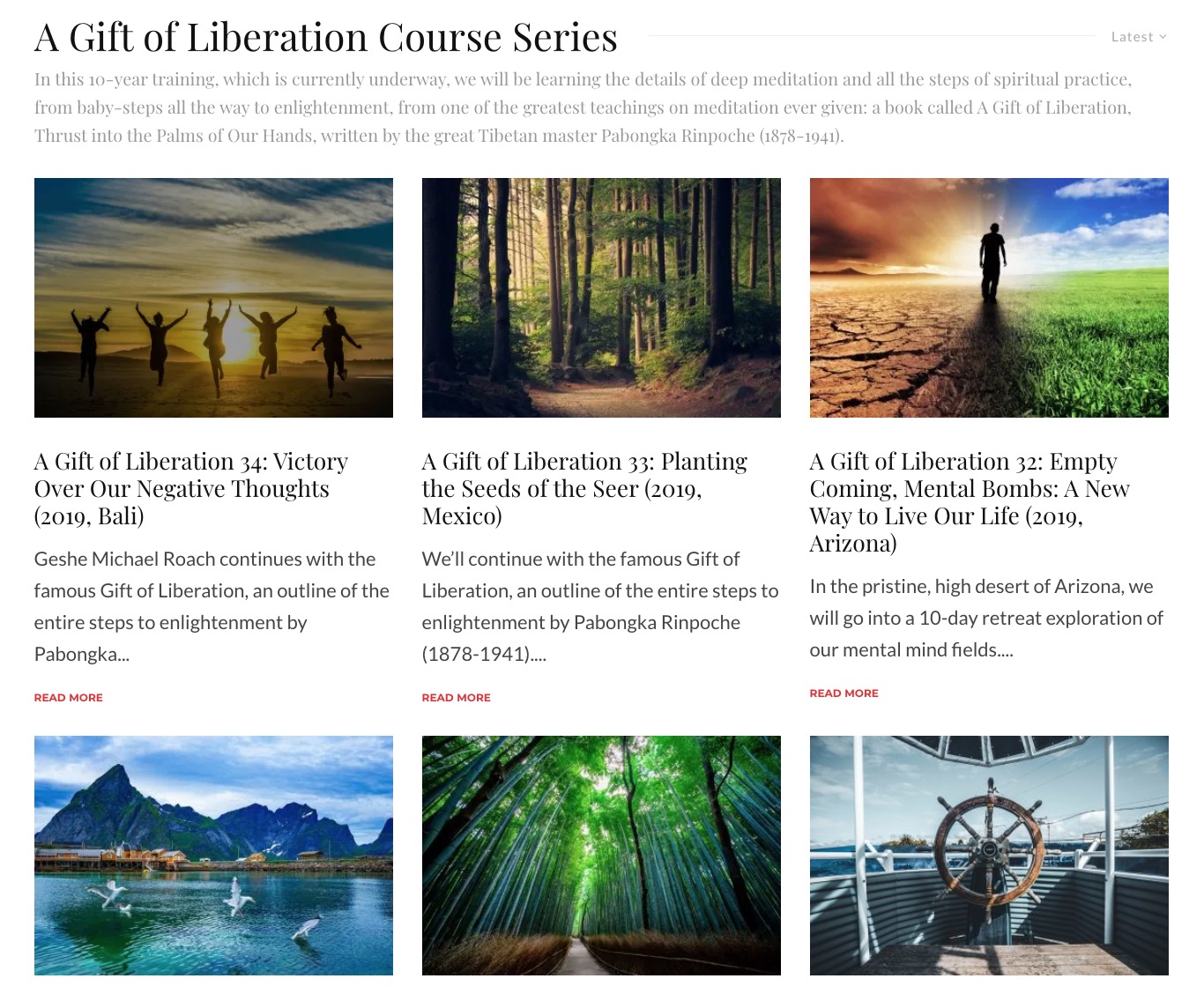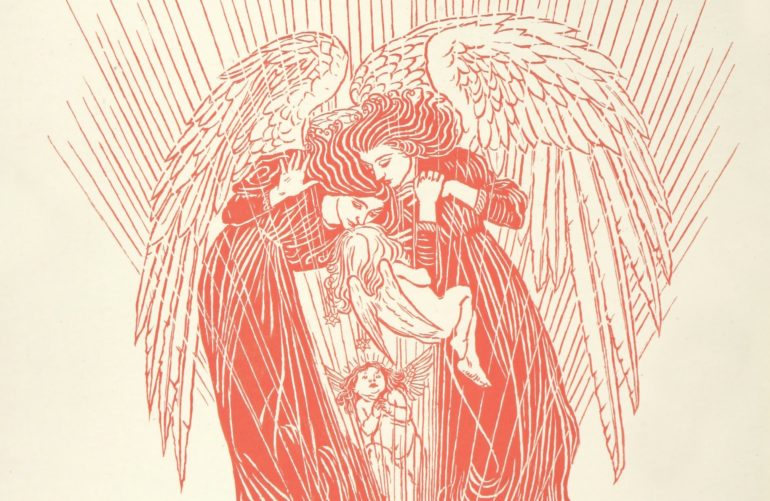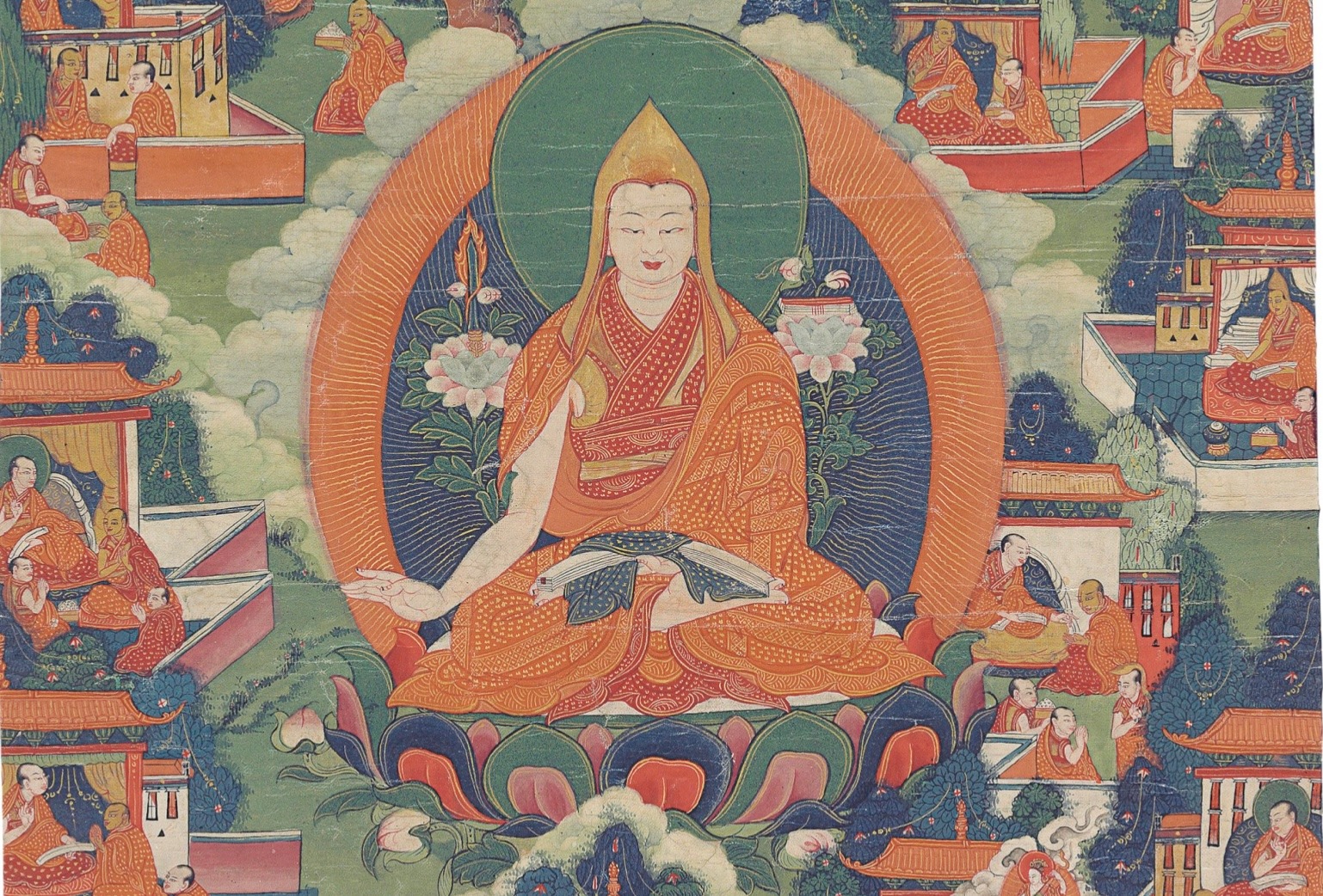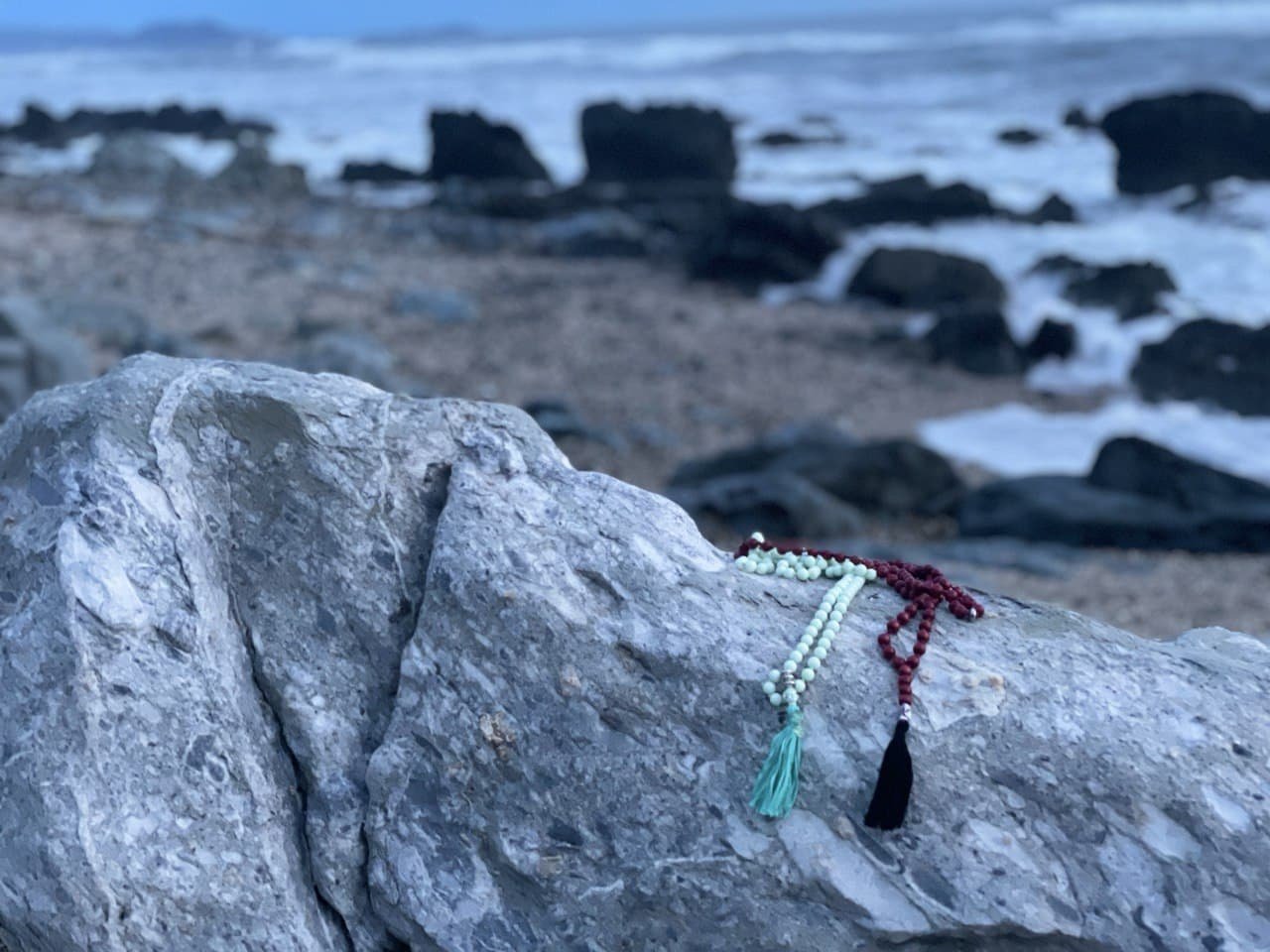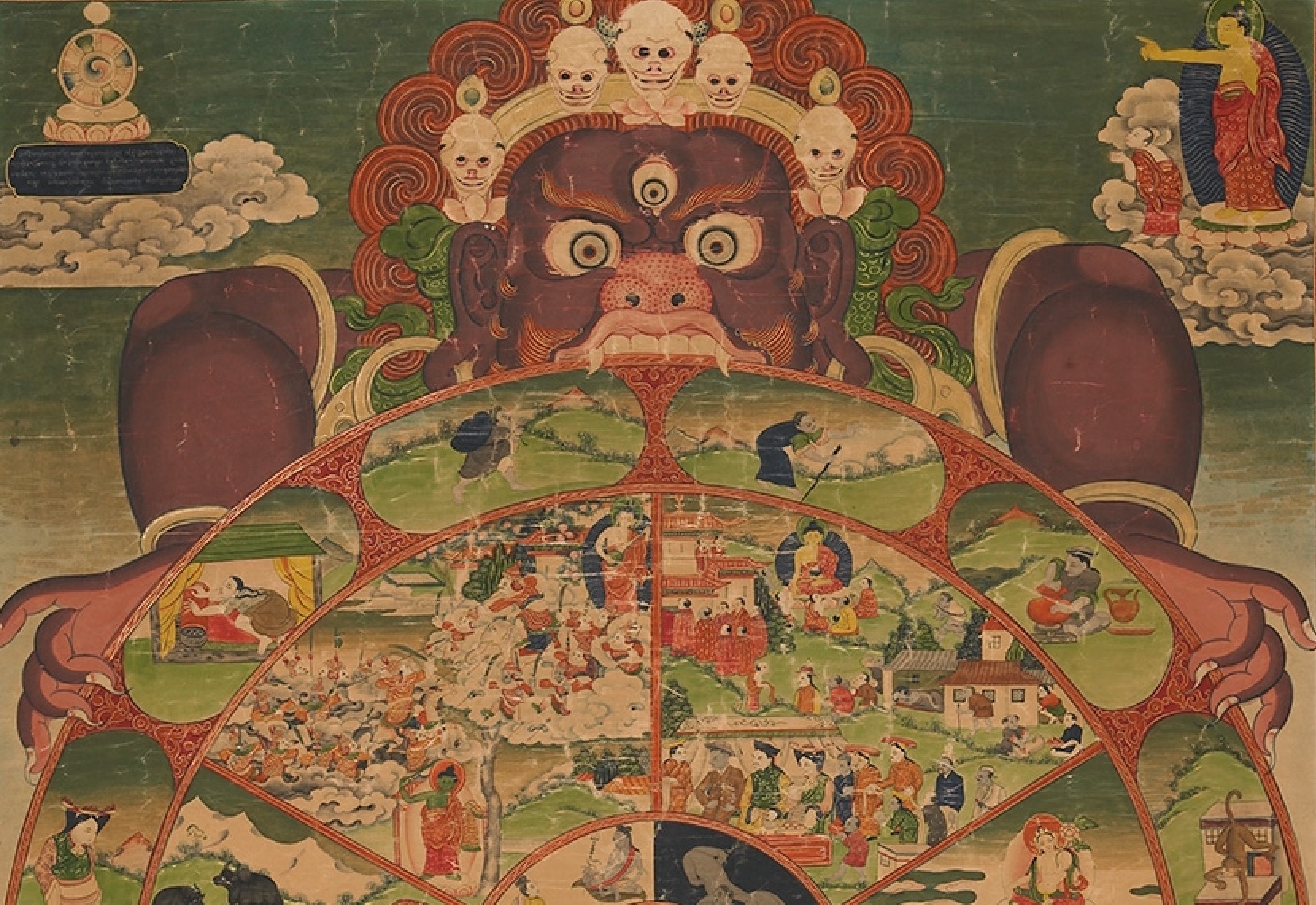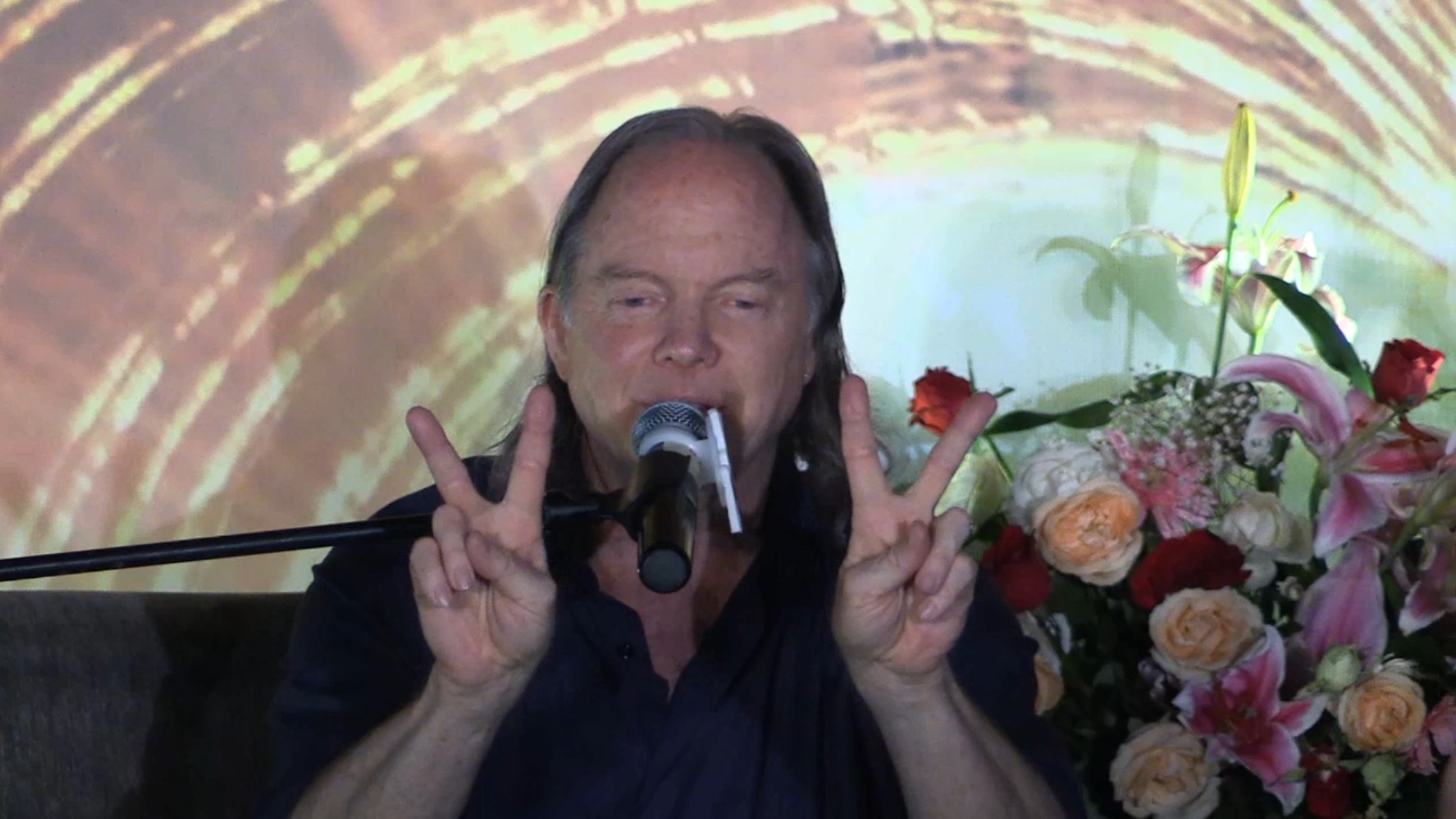掌中解脱第39期 – 促进您的慈悲心: 自他交换
这种自他交换的练习会起到催化剂、
促进改变的作用,以加速培养您的慈悲心。
在佛教中自他交换的深度修行不仅仅是设身处地为他人着想;它是更糟糕,更有感觉的。首先要了解每个人都应该和您一样拥有同等的幸福。 (我们可能会完全抗拒!)其次,您不仅设身处地为他人着想,并交换观点,您还转向自己,从他们的角度回望自己。从那个观点,您开始从他们的角度评估和批评自己的行为以及它如何影响他人。您可以从自己的行为当中感受到他们的感受!
因此,仅是投入他人的处境有可能会带来一些理解,但这种自他交换的练习会起到催化剂、促进改变的作用,以加速培养您的慈悲心。您必须快速的接受自己的行为、言语和思想所带来的后果。这种做法非常深入地告诉我们到底哪里做得不好,并让我们迅速改变。这不适合胆小的人!
在亚洲经典学院所提供的线上洞见课程中,格西麦克·罗奇将带领我们踏上深入的自他交换实践旅程。我们将学习帕绷喀·仁波切的“掌中解脱”,并详细探索这个冥想的所有细节。它旨在快速打开您的心扉,帮助您找到极限的边缘,突破自己,成为世界上更善良、更有慈悲心、以及更有效率的人。
来自TKB的消息:
这个项目还在持续进行中,仍在编辑所有的中文音频和视频。
总共有8 种语言,超过 240 个音频和视频文件需要编辑,因此需要花些时间。
当我完成每一堂课时,会上传到在这里和 Youtube 上,所以请持续查看更新内容。
英语语种已经全部完成,您可以在下方找到所有的英文音频和视频。
不幸的是,由于录制过程中出现了一个问题,前 3.5 堂课和第 6 堂课的前几分钟并没有高清视频。但幸运的是,由于当时是现场直播的,我们有直播视频可以来替换缺失的录制课程,来补上所有这些内容。
视频
是一个视频播放列表,从最近发布的课程开始。只需点击观看下一个视频,即可观看本系列的其他视频。
音频
这是我们第39期道次第静修营,迄今为止这已经是我们道次第学习的第十个年头了。点击下面的图标,你可以看到本系列的所有其他教授。
掌中解脫第39期 – 促進您的慈悲心: 自他交換
這種自他交換的練習會起到催化劑、
促進改變的作用,以加速培養您的慈悲心。
在佛教中自他交換的深度修行不僅僅是設身處地為他人著想;它是更糟糕,更有感覺的。首先要了解每個人都應該和您一樣擁有同等的幸福。 (我們可能會完全抗拒!)其次,您不僅設身處地為他人著想,並交換觀點,您還轉向自己,從他們的角度回望自己。從那個觀點,您開始從他們的角度評估和批評自己的行為以及它如何影響他人。您可以從自己的行為當中感受到他們的感受!
因此,僅是投入他人的處境有可能會帶來一些理解,但這種自他交換的練習會起到催化劑、促進改變的作用,以加速培養您的慈悲心。您必須快速的接受自己的行為、言語和思想所帶來的後果。這種做法非常深入地告訴我們到底哪裡做得不好,並讓我們迅速改變。這不適合膽小的人!
在亞洲經典學院所提供的線上洞見課程中,格西麥克·羅奇將帶領我們踏上深入的自他交換實踐旅程。我們將學習帕繃喀·仁波切的“掌中解脫”,並詳細探索這個冥想的所有細節。它旨在快速打開您的心扉,幫助您找到極限的邊緣,突破自己,成為世界上更善良、更有慈悲心、以及更有效率的人。
來自TKB的消息:
這個項目還在持續進行中,仍在編輯所有的中文音頻和視頻。
總共有8 種語言,超過 240 個音頻和視頻文件需要編輯,因此需要花些時間。
當我完成每一堂課時,會上傳到在這里和 Youtube 上,所以請持續查看更新內容。
英語語種已經全部完成,您可以在下方找到所有的英文音頻和視頻。
不幸的是,由於錄製過程中出現了一個問題,前 3.5 堂課和第 6 堂課的前幾分鐘並沒有高清視頻。但幸運的是,由於當時是現場直播的,我們有直播視頻可以來替換缺失的錄製課程,來補上所有這些內容。
視頻
是一個視頻播放列表,從最近發布的課程開始。只需點擊觀看下一個視頻,即可觀看本系列的其他視頻。
音頻
這是我們第39期道次第靜修營,迄今為止這已經是我們道次第學習的第十個年頭了。點擊下面的圖標,你可以看到本系列的所有其他教授。
Note from TKB: This is a work in progress and still editing all the audio and video for 中文, русский, Español, Tiếng Việt, Deutsch, Indonesian, and Română. There’s over 240 audio and video files to edit for all 8 languages so it will certainly take some time. As I finish each class I’ll upload here and on Youtube, so please keep checking back for updates. The English is all finished and you’ll find all the English audio and video below.
Unfortunately, there was a recording problem and don’t have the HD quality video available for the first 3.5 classes and the first few minutes of Class 6. Luckily, since this was originally streamed live we do have the video to replace the missing classes and fill in all those gaps. So what you’ll find below is complete for all 18 classes.
This is such an important and beautiful teaching that I thought many of you would like to go deeper and learn more about the practice of exchanging self & others. There’s a really great ACI In-Depth Course from 2004 where Geshe Michael teaches the entire section on the practice of exchanging self and others, which is a large part of the chapter on meditation (Chapter Eight) from The Guide to the Bodhisattva’s Way of Life (Bodhisattvacaryāvatāra) by Master Shantideva. The original audio was quite poor quality, so I’ve cleaned up all the old audio to make for a much better listening experience. You’ll find the link to this course below the audio playlist and a lot of information to go deeper on this practice.
The full practice of exchanging self and others acts as a catalyst, an agent of change, to accelerate the development of compassion in your heart
The deep practice of Exchanging Self and Others in Buddhism isn’t just about putting yourself into someone else’s shoes; it’s far worse and far more palpable. It first starts with understanding that every being deserves to have the same happiness as you do. (Which we may resist entirely!) And secondly, you not only put yourself into the shoes of the other person, and swap perspectives, but you also turn back towards yourself, looking back at yourself from their perspective. From that point of view, you begin evaluating and critiquing your own behavior and how it impacts the other, from their perspective. You get to feel what they feel as a result of your own actions!
So while only wearing the shoes of another may bring about some realizations, this full practice of exchanging self and others acts as a catalyst, an agent of change, to accelerate the development of compassion in your heart. You have to come to terms very quickly with the consequences of your own actions, words and thoughts. This practice teaches us very poignantly where we come up short and asks us to change really quickly. It’s not for the faint of heart!
Geshe Michael Roach will take us on a journey through this deep practice of Exchanging Self and Others. We will be learning from Pabongka Rinpoche’s “Gift of Liberation Thrust into the Palm of Your Hand” and exploring this meditation in all its detail. It is designed to quickly open your heart and help you find the edge of your limitations and break through to become a kinder, more compassionate, and also effective person in the world.
This course is the 39th retreat and a continuation of our study of the Gift of Liberation Thrust into the Palm of Your Hand by Pabongka Rinpoche.
Class Video
This is a video playlist starting with the most recently posted class. Just click for the next video to see additional videos in the series.
Class Audio
Want to go deeper on the practice of exchanging self & others?
This third course of the ACI In-Depth Course Series presents the entire section on the practice of exchanging self and others, which is a large part of the chapter on meditation (Chapter Eight) from The Guide to the Bodhisattva’s Way of Life (Bodhisattvacaryāvatāra, Byang-chug sems-dpa’i spyod-pa la ‘jug-pa), by Master Shantideva (c. 700 AD). This course is meant to give much more detail on this subject than the related original ACI course, Guide to the Bodhisattva’s Way of Life, Part Two (ACI Course XI), which covered only about half of this section on exchanging ourselves and others.
The reading material for this course consists of the 84 relevant verses of Master Shantideva’s root text, and includes both the original Sanskrit and the Tibetan translation of these verses. Following a pattern of the ACI Foundation Courses as we go deeper now with the in-depth courses, we will be taking a closer look at the original Sanskrit versions of the root texts.
Our goal will be to glean more of the original feel of the Buddhism taught in the land of its birth, India, in a language—Sanskrit—which is directly related to modern languages like English that many of use. And so we will be taking a special interest in places where checking the original Sanskrit wording gives us insights that we may miss out on if we utilize only the Tibetan translation.
For our basic English translation and interpretation of each verse, we will continue to rely heavily upon the extraordinary commentary written by Gyaltsab Je Darma Rinchen (1364-1432), the eminent disciple of Je Tsongkapa who became the first holder of his throne after the Teacher passed on. This commentary is called Entry Point for Children of the Victorious Buddhas (rGyal-sras ‘jug-ngogs.
With this course though we will also be using perhaps the most important commentary from ancient India upon Master Shantideva’s work. This is The Commentary to Difficult Points in the “Guide to the Bodhisattva’s Way of Life” (Bodhicaryāvatāra Pañjikā, Byang-chub kyi spyod-pa la ‘jug-pa’i dka’ ‘grep), composed by the Indian pandit Prajnyakara Mati (Prajñākaramati, or Shes-rab ‘byung-gnas blo-gros in Tibetan). The literal meaning of this author’s name is “The Intelligent One, the Source of Wisdom.”
His explanation of our root text was of course written in Sanskrit; it was translated into Tibetan about a thousand years ago, and is found in the Tengyur collection of ancient commentaries to the word of Lord Buddha. It seems to have been one of the primary sources used by Gyaltsab Je for his own commentary. Because it was composed in part as a “word commentary,” in the original Sanskrit, it sheds substantial new light on the meaning of Master Shantideva’s text.
- Idims: 開啟金剛道之門:五所學院 第1課 (2025,美國亞利桑那州) - 21 5 月, 2025
- 《惡魔與天使的辯論》第 19 回:五房課程 1 (2025 年,亞利桑那州) - 12 5 月, 2025
- 開啟金剛道之門:五所學院 第1課 (2025,美國亞利桑那州) - 6 5 月, 2025


